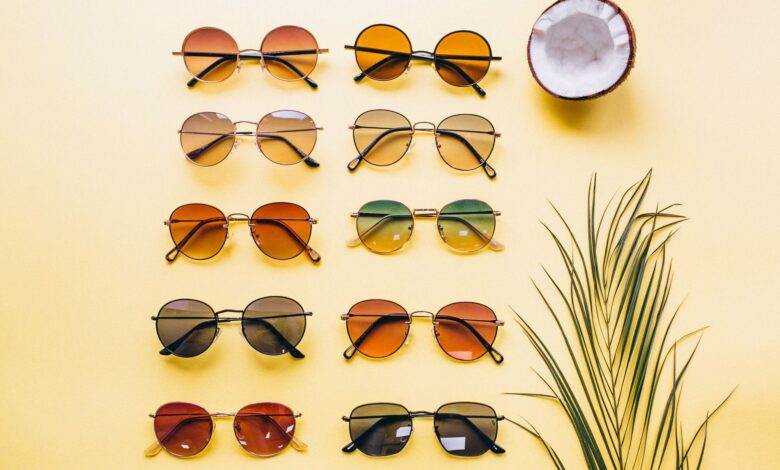5 Factors to Consider When Selecting the Perfect Sunglasses Frames

The frames you choose should compliment your skin tone. Avoid colors that are too bright or have red undertones. Angular faces look good with frames that have straighter lines, while curved features work best with soft, rounded edges. Narrow-set eyes benefit from a lighter, wider bridge that helps visually push the eyelashes further apart.
1. Material
The choice of sunglasses frames material is crucial for their functionality and performance. Nylon frames are ideal for high-intensity sports as they resist sweat and corrosion. They are also lightweight and flexible. Some models feature flex hinges to reduce pressure on the nose and ears and prevent pinching or rubbing.
Plastic frames are another great alternative to nylon and offer similar flexibility. They come in various colors and use recycled or renewable materials. While they may not be as durable as nylon or polycarbonate, their affordability makes them an ideal option for casual wear and fashion sunglasses.
They are also lightweight and provide good optical clarity. For outdoor activities, it is best to choose a pair of sunglasses that are coated with an anti-reflective coating. This is to minimize the glare from the sun and improve visual clarity. Lens tints are also a great way to personalize your sunglasses and are an excellent choice for enhancing color vibrancy, improving depth perception, and reducing eye strain in bright sunlight.
2. Shape
Sunglass frames come in a wide range of shapes. Choosing a frame that compliments your face shape is important for a balanced look. To determine your face shape, look in a mirror and draw a line from the center of your eyebrows to your jawline and chin. This will give you an idea of your natural face shape. Consider a pair of aviator sunglasses if you have a square face shape.
These frames will elongate your facial features while adding a bold touch to your style. Round faces should opt for a pair of oval or rectangular sunglasses to add balance and definition to the front. Rimless or classic browline frames will also work well with this face type. Oval-shaped faces can pull off almost any sunglasses, but look at the base curve number when shopping for a pair. The higher the number, the more face-hugging and curved the glasses. A lower base curve is more flat across the front of the lens and doesn’t offer as much coverage.
3. Lenses
In addition to color and frame shape, you should also consider the lenses on your sunglasses. Most nonprescription sunglasses come with plastic lenses, often called acrylic, polycarbonate or composite (which can use other materials). These are lighter, more impact-resistant than glass, and less prone to scratching. They do, however, not offer the same level of UV protection as glasses with glass lenses.
Whether you prefer plastic or glass, it’s important to look for polarized lenses, which cut glare caused by sunlight reflecting off smooth surfaces like pavement, chromed car exteriors and water. These reduce the amount of light entering your eyes, which makes them especially useful for outdoor activities. If you’re looking for stylish sunglasses, try oversized frames.
4. Style
A great pair of sunglasses does more than protect you from UV rays. They also make a fashion statement that reflects your style. Aviator frames are bold and masculine, while shield and wayfarer styles evoke mid-century cool.
Choose frames that fit in your “eyewear sweet spot,” which ensures a flattering size and ample sun protection. Consider your skin tone and hair color when choosing the right frame and lens colors.
Light-skinned individuals can match their natural coloring with brown or neutral shades, while dark-skinned individuals can opt for a lighter frame and lens to add an appealing pop of color. If you’re making a big investment in a new pair of sunglasses, be sure to select a popular style that is versatile and will stand the test of time.
5. Color
A pair of sunglasses frames and lenses that best match your skin tone can make a big difference in how your final look turns out. A pale complexion and blue, green or grey eyes characterize cool skin tones. These complexions are complemented well with silver, pink or blue lens colors complimenting your tan and eye color.
On the other hand, warm skin tones are characterized by a tan complexion and brown or black eyes. These complexions are complemented well by orange, gold, or yellow frames and lens colors that accent your tan and bring out the golden hues in your eyes. Some of the most popular sunglass frames are made from metal like stainless steel or titanium.
Final Words
They are lightweight and durable, and some even feature high-impact resistance for sports. Stainless steel also has a classic and sleek look that plastics cannot replicate. However, they can be heavier and prone to corrosion if not properly cared for. For this reason, choosing a pair with adjustable nose pads and flex hinges is a good idea for a comfortable fit.



